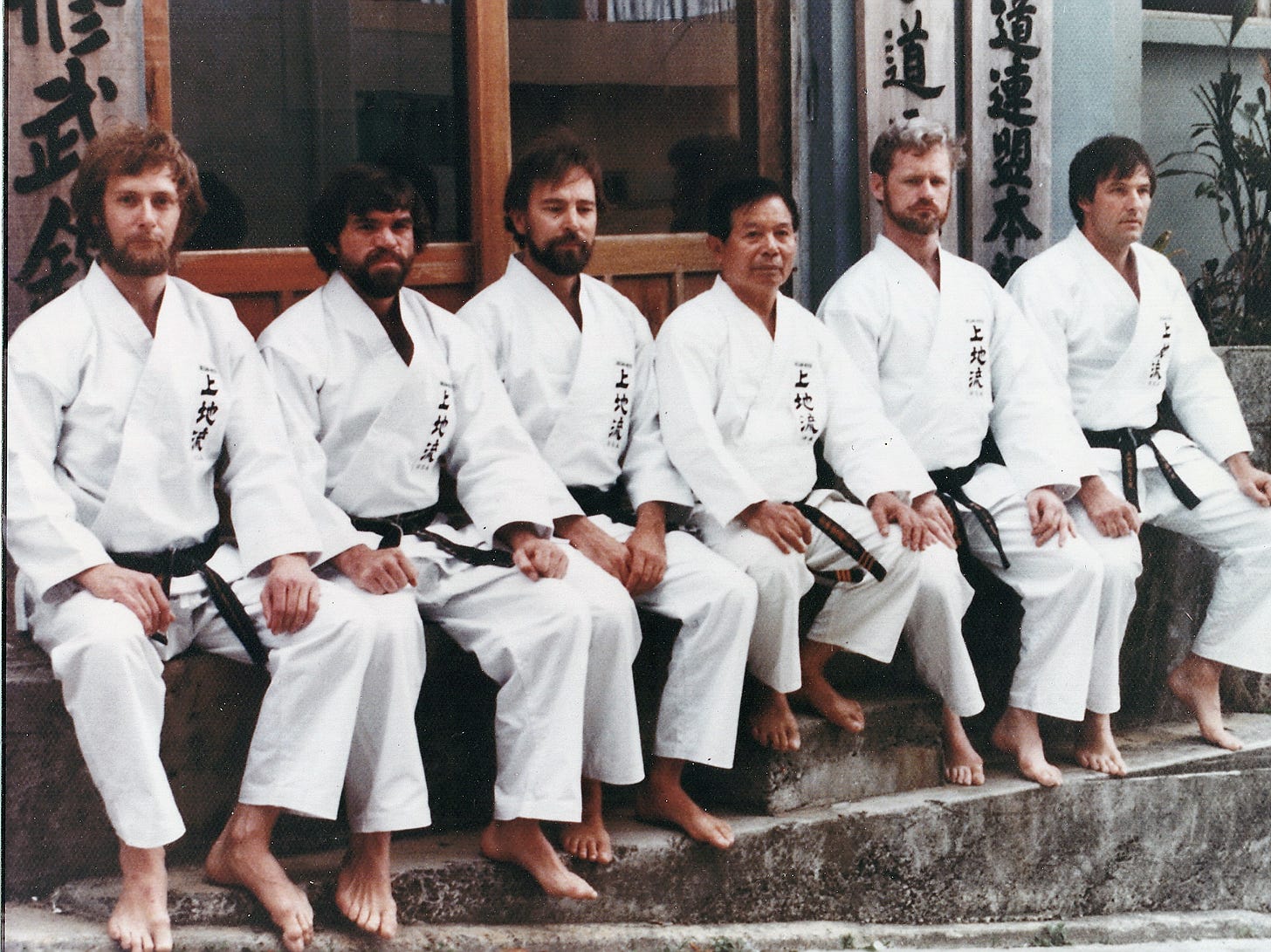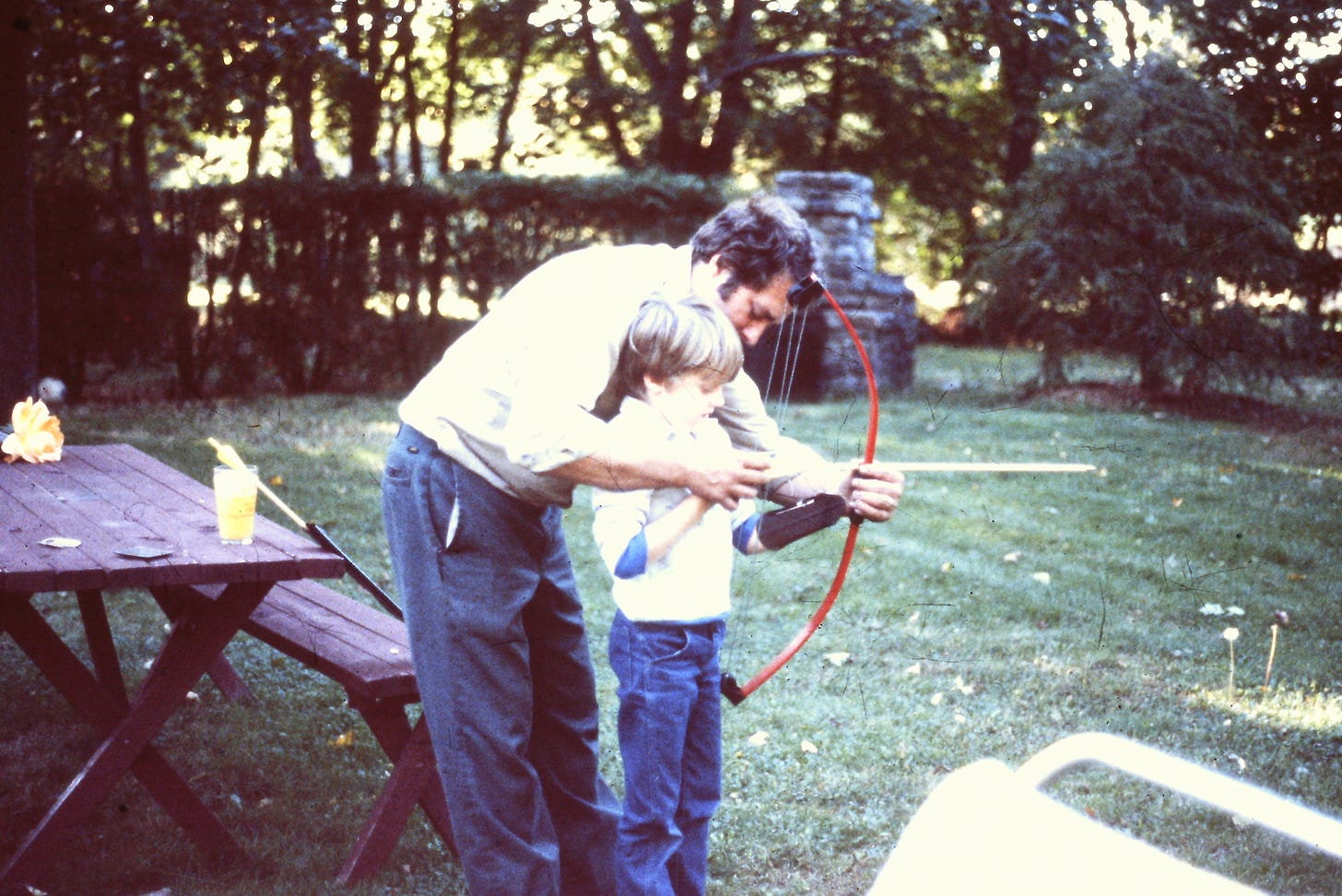credit: “Family of Uechi Organizations,” archive photo 2003
It starts with the breath. I learned to count in Japanese when my Dad and I took on the ultimate 80s father/son bonding exercise by taking Karate together. I am sorry, but I somehow have yet to watch Cobra-Kai. The Karate Kid craze in the 80s and early 90s was a real thing, and we were all about it.
We studied under Sensei Michael and Sensei Linda. We had to drive to get there and were sure not to forget our gi when leaving the house because there was a ‘three strikes and you are out’ penalty for forgetting your gi at home.
My Dad used to smoke, and he had his cigarettes in his red t-shirt pocket by his heart. One of the training exercises we did was to face each other, our forearms pressed against each other. In a kind of “hot hands” or reverse arm wrestle, the point was to stare your opponent down, quickly move your arm away from the other person and land a strike. At home, my goal was simple. Our arms were pressed against each other. As soon as you felt the other person move to strike, your task was to block their strike. But I had a different goal when I was attacking. I knocked my Dad’s Marlboro Reds up and out of his shirt and onto the floor to make a sound that only a small cellophane-covered cardboard box filled with tobacco-filled paper tubes can make. The strike when landed on me was little more than a three-fingered ‘slap’ to the face. We played best of 10 (I think).
September 12th was Sensei George Mattson’s birthday. He studied Uechi-Ryu, brought it to America, and wrote the first English book about Karate, The Way of Karate from Tuttle Publishing in 1958. I used to work for Tuttle Publishing, by the way! My first ‘real’ job.
Americans have a different way of celebrating elders and don’t have the same cultural respect for older generations as other countries, so I would just like to wish Sensei Mattson a happy and healthy year ahead and thank him for bringing us Uechi-Ryu. Not only did it connect me with my father in a meaningful way at a time when it was important to do so developmentally, but I also used the fundamentals of Uechi-Ryu in self-defense and my daily life.
Sensei Mattson’s black belt is literally worn out.
Daily routine is a kata
I have not practiced karate in several years, as I am always searching for a Uechi-Ryu class near me. It is not as popular as mixed martial arts and Tae Kwon Do. There is no Uechi dojo around me. I re-upped as a white belt for a Japanese karate style ten or 15 years ago but didn’t stick with it.
One thing I do daily is that I count to ten in Japanese on my reps at the gym, on my bike for a good sprint, or out running between telephone poles (a HIIT technique I learned as the Cross Country Co-Captain in high school).
I can only imagine that the particular accents and pronunciation were taken from Sensei Mattson as it passed to me. I hope to meet Master Sensei Mattson one day!
From 1 to 10
First off, the numbers in Japanese from 1 to 10 are these. I have put my spin on it in parens.
ichi 一 (EECH!)
ni に (KNEE)
san 三 (SOAHN)
yon 四
shi 四 (CHEE)go 五 (GO)
roku 六 (LUCK!)
nana 七
shichi 七 (SEECHE)hachi 八 (HAHHTCH)
kyuu 九 (Q!)
jyuu 十 (JU)
REPEAT.
There is also a cadence in my counting that tells a story in three acts, and #10 “JUUUUUUU” is the rolling credits. If you can count to ten lying on. your back with your feet raised 6 inches in the air and holding it there, it does feel. like you have accomplished something.
I can’t pinpoint Sensei Mattson’s exact age, but it’s around 85, and he is still the father of Karate for me and lots of Americans.
It is valuable to celebrate these milestones and recognize elder leaders in our culture this week as the U.K. mourns the loss of its Queen.
domo arigatou gozaimasu
Dad and I bonding, Western Kyūdō







